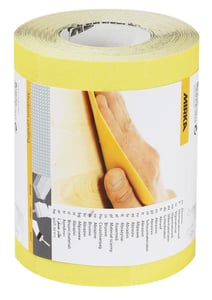What is the best way to strip paint from wood?
Deciding you want to restore a piece of wood, or furniture, back to its original state can take some time. We’ve written this article so you can successfully achieve what you’re setting out to do, which is remove any paint or varnish from wood and restore the wood back to its original naturally beautiful state. So let’s get into it….
How can you remove paint from wood?
There are three very well known ways to strip paint from wood, these include:
- Paint strippers
- Sanding
- Heat Gun
Paint Stripper
Paint strippers, while a chemical approach, often provide the most effective results—removing paint much faster than sanding. They’re particularly good for wood with unique shapes, knots, or intricate details that are difficult to access with standard sanding techniques, such as balustrades on staircases. There are many excellent paint strippers available on the market, and our top recommendations are:
- Bartoline Paint & Varnish Stripper - this coating is applied by brush to a variety of surfaces including wood, metal, glass & plaster. For best results leave for around 30 minutes. If you are working with more than 5 layers of paint, a second coat may be necessary. Once you have applied and left to take effect simply scrape off with a shave hook, wash down to ensure all stripper products are adequately removed and expose your desired clean surface. You can then rub down your areas with sandpaper to achieve your final desired look.
- C-Tec Peel Tec - this aerosol acts fast and in less than 10 minutes peels paint away. It also works across a wide range of surfaces (including metal and wood) and through its unique nozzle delivers the perfect amount of product onto any given surface.
Sanding
Sanding is an excellent choice for smaller projects and simpler wooden pieces without intricate details, as it allows easy access to all areas. When sanding paint or varnish off wood, it's crucial to sand deep into the surface as varnish penetrates deep into the wood. For best results, sand evenly across the entire surface for a consistent, smooth finish. Over-sanding in some areas can create an uneven finish, which could ruin the final look.
To achieve a smoother finish with less effort, consider using a sanding attachment on a drill or invest in a specialised belt sander or sheet sander - Mirka are a well respected brand of sanders which are perfect for larger or frequent smaller projects (available to purchase in our stores). Remember to prioritise safety—always wear appropriate protective gear to avoid inhaling dust and wood fibers during the process.

Heat Gun
Heat guns are an effective tool for removing paint from wooden surfaces, though they are less suitable for varnish, as it can become gooey and difficult to remove. For the best results, hold the nozzle about 2 inches away from the surface and move the gun back and forth until the paint begins to bubble. Be cautious and stop immediately if the finish starts to smoke.
Once the paint has bubbled, use a scraper and/or shave hook to remove the loosened paint. Shave hooks are perfect for removing paint from any stubborn or difficult to reach areas. Once scraped, wipe your surface down or sand evenly to achieve a smooth and consistent finish.
Health & Safety Recommendations When Stripping Paint from Wood
When removing paint from wood using paint strippers you’re essentially working with hazardous materials and therefore it is important you protect yourself from fumes, and ensure these are used outdoors or if unavoidable indoors, we recommend a face mask. Other general recommendations for safely striping paint from wood:
- Minimise mess and additional damage to surroundings by laying old newspaper or tarp underneath your area. Or if you have a work bench or workshop, always make sure you have made sufficient room to carry out the job.
- Wear old clothes, or workwear suited to this job, which minimises the risk of liquid easily seeping through clothes onto your skin.
- No matter your preferred choice of stripping paint from wood - please always make sure you wear protective gloves and a dust respirator face mask as it minimises breathing in any airborne dust from sanding and are designed to be comfortably worn for longer periods of time.
- Try and use paint strippers outdoors, particularly those which say this on the instructions. When these are not in use, make sure their lids are secure meaning no additional fumes are evaporating as you work.
Now You’ve Stripped Your Paint, What Are Your Plans?
Congratulations, you’ve restored your wood back to its original state - here’s some of our best products to help your wood look as good as new:
- Oil it, and provide additional benefits to the wood - like preventing it from dying out and splitting or cracking over time.
- Varnish - improve the overall appearance of the wood by enhancing its overall beauty and highlighting its grain. This is also beneficial to protecting against damage.
- Polish it and achieve a high sheen, making your piece look as good as new.
- Paint it a completely different shade to give it an entirely new lease of life.
If you need any more advice or products for your wood, shop our wide selection of woodcare products ranging from stains, varnishes, oils & waxes and so much more.





